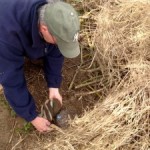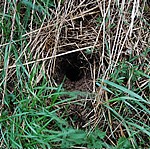 Post-release location tracking will provide information on the home-range, behaviour and some indication of the health of the animal. There are several possible methods available for location monitoring.
Post-release location tracking will provide information on the home-range, behaviour and some indication of the health of the animal. There are several possible methods available for location monitoring.
A GPS tracker was developed in 2012, with the intention of transmitting GPS information wirelessly to a base station where the data would be stored to disk. In the event of the animal being out of range of the base station the data was stored on the tracker and then transmitted to the base station when the animal moved back into range. Multiple base stations and mobile hand held devices were to be used to extend the coverage when required. Each base station could log an unlimited number of animals. The base station could run constantly so that it was able to receive transmissions from any GPS loggers in the area, thus having higher power requirements. This research has now been concluded, with recommendations for further development of the technology.
Previously, SWCC operated a tracking programme using a temporary blue ID badge. If you saw one of our tracked hedgehogs we asked members of the public to make a note of the number without touching or distressing the hedgehog, and then record your data on our on-line survey. This produced a wealth of data which helped guide the hospital with future release site allocation.
Native Species Survey
 Additionally, the Park’s Green team co-ordinated an annual Bio-Blitz in May to survey the wildlife park grounds for all varieties of native flora and fauna species. This data contributed to the national picture of our wildlife health. Nationally the Environment Agency are the lead body with the support of organisations such as The Wildlife Trust who advise on local populations. In the zoo industry BIAZA monitors the species through a native species working group.
Additionally, the Park’s Green team co-ordinated an annual Bio-Blitz in May to survey the wildlife park grounds for all varieties of native flora and fauna species. This data contributed to the national picture of our wildlife health. Nationally the Environment Agency are the lead body with the support of organisations such as The Wildlife Trust who advise on local populations. In the zoo industry BIAZA monitors the species through a native species working group.
